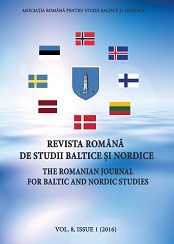Political instability and corruption. The Phanariot regime as seen by Russian and Nordic travellers
Political instability and corruption. The Phanariot regime as seen by Russian and Nordic travellers
Author(s): Mihaela Mehedinti-BeieanSubject(s): Politics / Political Sciences, History, Social Sciences, Literary Texts
Published by: Asociatia Romana pentru Studii Baltice si Nordice
Keywords: Phanariot regime;Romanian Principalities;political history;travel literature;
Summary/Abstract: The history of the Romanian Principalities was particularly tumultuous during the modern period, given that they were situated in a geographical area of great interest for three large empires: the Ottoman Empire, the Austrian Monarchy and Russia. As a result, the political regime established in Moldavia and Wallachia in the 18th century and which lasted until 1821 bore all the hallmarks of Orientalism as expressed by rulers, namely the most profound corruption at all administrative levels, an utter lack of interest regarding the people’s welfare and the unremorseful pursuit of their own interests.The Nordic and Russian travellers were acutely aware of all these problems and considered that the Ottomans were the only ones to blame for this deplorable state of affairs. Unfortunately, with time, some of the shortcomings associated with the Phanariot regime became unmistakable traits of Romanian political behaviour which persisted well into the 20th century. Nevertheless, some of the travellers also remarked the adoption of a number of reforms with highly beneficial effects for the Principalities between 1711/1716 and 1821 and, at least apparently, the period when General Pavel Kiseleff was governor of Moldavia and Wallachia was an especially prolific one in terms of reversing some of the damage caused by the Phanariots.However, one of the limitations of using travel literature as a source is that it needs to be treated with extreme care when it comes to establishing the boundaries between truth and fiction, as well as between innocent observations and decidedly dishonest interpretations. The aim of the present study is thus to present all of the above-mentioned political evolutions as they were seen by foreign travellers, whilst also questioning and unravelling the latter’s motives for depicting a certain image of the Romanian Principalities’ political elite.
Journal: Revista Română de Studii Baltice şi Nordice
- Issue Year: 8/2016
- Issue No: 1
- Page Range: 21-44
- Page Count: 24
- Language: English, Romanian

